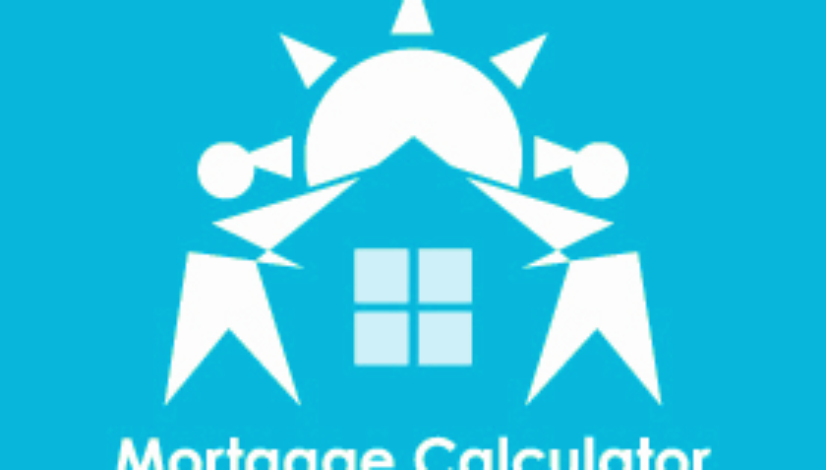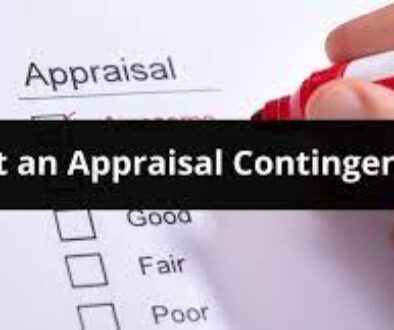What is Adjustable Rate Mortgage
What is adjustable rate mortgage
Homeownership marks the start of a new chapter in your life. However, before you can move into the home of your dreams, you’ll need to decide which type of mortgage will work best for your financial goals. One of your options is an adjustable-rate mortgage. But what is an adjustable-rate mortgage?
Let’s explore this type of loan so you can decide if it’s right for you.
Adjustable-Rate Mortgage Definition
An adjustable-rate mortgage (ARM), also called a variable-rate mortgage, is a home loan with an interest rate that adjusts over time based on the market. ARMs typically have a lower initial interest rate than fixed-rate mortgages, so an ARM is a great option if your goal is to get the lowest possible mortgage rate starting out.
This interest rate won’t last forever, though. After the initial period, your monthly payment can fluctuate periodically, making it difficult to factor into your budget.
Thankfully, taking the time to understand how ARM loans work can help you be prepared in case your rate goes up.
Adjustable- Vs. Fixed-Rate Mortgages
As a prospective home buyer, you can choose between an adjustable rate mortgage and a fixed rate mortgage. So, what’s the difference?
An ARM may charge less interest during the introductory period, thus offering a lower initial monthly payment. But after that initial period, changing interest rates will impact your payments. If interest rates go down, ARMs can become less expensive. However, ARMs can also become more expensive if rates go up.
A fixed-rate mortgage offers more certainty because it retains the same interest rate for the life of the loan. That means your monthly mortgage payment will stay constant throughout the loan term
How Does An Adjustable-Rate Mortgage Work?
ARMs are long-term home loans with two periods: a fixed period and an adjustable period.
- Fixed period: During this initial, fixed-rate period (typically the first 5, 7 or 10 years of the loan), your interest rate won’t change.
- Adjustment period: This is when your interest rate can go up or down based on changes in the benchmark (more on benchmarks soon).
Let’s say that you take out a 30-year ARM with a 5-year fixed period. That would mean a low, fixed rate for the first 5 years of the loan. After that, your rate could go up or down for the remaining 25 years of the loan.
Conforming Vs. Non-conforming ARM Loans
Beyond the loan term, you’ll encounter conforming loans and non conforming loans as you explore your ARM options.
Conforming ARM Loans
Conforming loans are mortgages that meet specific guidelines that allow them to be sold to Fannie Mae and Freddie Mac. Lenders can sell mortgages that they originate to these government-sponsored entities for repackaging on the secondary mortgage market if the mortgages conform to the funding criteria of Fannie, Freddie and the Federal Housing Finance Agency’s (FHFA) dollar limits.
If a loan doesn’t meet these specific guidelines, it will fall into the non-conforming category. But beware of the potential pitfalls before jumping into a non-conforming loan.
Non-conforming ARM Loans
There are many good reasons why borrowers may need a non-conforming mortgage. For example, you may need to take out a non-conforming jumbo loan to purchase a home in a high-cost area. If you’re considering a non-conforming ARM, be sure to read the fine print about rate resets very carefully so you understand how they work.
Conventional Vs. Government-Backed ARMs
A conventional loan is any mortgage that is not backed by a government agency, such as the Department of Veterans Affairs (VA), Federal Housing Administration (FHA) or the U.S. Department of Agriculture (USDA).
It’s important to note that if you use a government-backed loan, like an FHA ARM and VA ARM your mortgage will be considered non-conforming according to the rules of Fannie Mae and Freddie Mac. However, they have the full backing of the U.S. government – which might make some home buyers feel more comfortable choosing one of these loans.
ARM Rates And Rate Caps
Mortgage rates are influenced by a variety of factors. These include personal factors like your credit score and the broader impact of economic conditions. Initially, you may encounter an “initial rate” that’s much lower than the interest rate you’ll have at some point later on in the life of the loan.
U.S. Treasury and SOFR rates are among the lowest rates possible for short-term loans to their most creditworthy borrowers, generally governments and large corporations. From that benchmark, other consumer loans are priced at a margin, or markup, to these cheapest possible loan rates.
The margin applied to your ARM depends on your credit score and credit history, as well as a standard margin that recognizes mortgages are inherently riskier than the types of loans indexed by the benchmarks. The most creditworthy borrowers will pay close to the standard margin on mortgages, and riskier loans will be further marked up from there.
The good news is that rate caps may be in place, indicating a maximum interest rate adjustment allowed during any particular period of the ARM. With that, you’ll have more manageable swings with each new rate change.
Refinancing An ARM
An ARM can be the right fit for some situations, but what if your financial circumstances change? You can pursue refinancing your ARM with a fixed income mortgage to lock in more stability than an ARM can offer.
Thankfully, the process is relatively straightforward. By refinancing, you’ll take out a new loan to pay off the original mortgage. From there, you’ll start paying off the new mortgage.
Since a new mortgage is involved, you’ll need to go through many of the same steps you took when applying for your original loan. For example, you’ll likely need to provide pay stubs, bank statements and other proof of your income and debts.
Explore today’s interest rates to see if now is a good time to refinance to a fixed-rate mortgage. If rates are higher than your current ARM, it may not be the best opportunity to make the switch.
Different Types Of ARM Loans
If you’re interested in an ARM, several arrangements are available to choose from. Here’s a closer look at your options.
5/1 And 5/6 ARMs
5/1 and 5/6 ARM loans offer a fixed interest rate for the first 5 years of the loan term. The second number refers to how often the rate adjusts after the first 5 years. For a 5/1 ARM, the rate adjusts once a year. With a 5/6 ARM, the rate adjusts every 6 months..
So, what’s a rate cap? In the real estate industry, you may see the term 5/1 (2/2/5) used to refer to a 5/1 ARM. The second set of numbers – 2/2/5 – signifies details of the rate caps. These include:
- Initial adjustment cap: The first “2” is the cap, or limit, on how much your first reset can adjust your interest rate. In other words, at the first reset, after the 5-year introductory period, your ARM may reset your interest rate by 2% in Year 6.
- Subsequent adjustment cap: The second “2” is the limit on how much your subsequent rate resets can increase your interest rate. Generally, 2% is the standard subsequent adjustment cap. So, in Year 7, your interest rate may rise again by as much as 2%.
- Lifetime adjustment cap: This is the cap that tells you how much the interest rate may increase over the lifetime of the loan. In our example, in Year 8 and thereafter, the interest rate can only increase by 1% total: 5% (total lifetime cap) – 2% (Year 1 adjustment) – 2% (Year 2 adjustment) = 1%
Most ARMs offer a 5% lifetime adjustment cap, but there are higher lifetime caps that could ultimately cost you much more. If you’re considering an ARM, make sure you completely understand how rate cap quotes are formatted and how high your monthly payments could get if interest rates climb.
7/1 And 7/6 ARMs
7/1 and 7/6 ARMs offer a fixed rate for 7 years. With a 30-year term, that would lead to fluctuating payments based on changing interest rates for 23 years after the initial fixed-rate period expires.
Remember, the interest rate could rise or fall, leading to a higher or lower mortgage payment to cover in your budget.
10/1 And 10/6 ARMs
10/1 and 10/6 ARMs have a fixed rate for the first 10 years of the loan. Later, the interest rate will fluctuate based on market conditions. If you take out a 30-year term, that will typically lead to 20 years of changing payments.
Advantages Of An Adjustable-Rate Mortgage
Adjustable-rate mortgages can be the right move for borrowers hoping to enjoy the lowest possible interest rate. Many lenders are willing to provide relatively low rates for the initial period. And you can tap into those savings.
Although it is temporary, your budget will enjoy the initial low monthly payments. With that, you may be able to put more toward your principal loan balance each month.
This added wiggle room to your budget can be the right option for those planning to move to a new area fairly shortly after buying a home. For example, if you intend to sell the home before the interest rate begins to adjust, any adjustments won’t be a problem for your budget – assuming the home sale goes through as planned and the mortgage is no longer yours to pay.
If you’re a buyer seeking a starter home, you can also enjoy these benefits because you’re planning to upgrade to a larger home when you can. If that plan allows you to sell the original home before the interest rate begins to fluctuate, the risks of an ARM are relatively minimal.
The flexibility you can build into your budget with the initial lower monthly payments offered by an ARM gives you the chance to build your savings and work toward other financial goals. Although there’s the looming chance of an interest rate hike after the initial period, you can build savings along the way to safeguard your finances against this possibility.
If you’re moving to a place you don’t anticipate being in more than 5 years and are looking for the lowest interest rate on a mortgage, an ARM may be the best mortgage option for you.
Disadvantages Of An Adjustable-Rate Mortgage
Just like with any mortgage type, an ARM has some potential downsides. The biggest risk of taking out an adjustable-rate mortgage is the probability that your interest rate will likely increase. If this happens, your monthly mortgage payments will also go up.
It can also be difficult to project your financial standing if and when interest rates and monthly payments fluctuate. It’s possible that if rates shift upward, you could struggle to afford the higher monthly payments. This instability may discourage home buyers from taking out an ARM.
Who Should Consider An ARM?
People who like certainty often opt for fixed-rate mortgages.
However, for some home buyers, particularly those who move often or may be looking for a starter home, ARMs might make more sense. If you’re not buying your forever home, then buying a house with an ARM and selling it before the fixed-rate period ends can mean a lower mortgage payment.
Of course, there’s always the risk that you won’t be able to sell the house before your rate adjusts. If you can’t sell, you may want to consider refinancing into a fixed-rate or a new adjustable-rate mortgage. However, interest rates could still rise before the terms of your refinance take effect, unless they’re locked in.
How To Qualify For An ARM Loan
As with all mortgages, ARM loans come with several requirements. You should be prepared to prove your income with W-2s, pay stubs and other documentation. Your income level will help the lender determine how large of a mortgage payment you qualify for.
Adjustable-Rate Mortgage FAQs
Let’s walk through some of the most common frequently asked questions about adjustable-rate mortgages.
Can I convert my ARM to a fixed-rate mortgage?
Let’s say you love what you thought would be your starter home and have decided you want to stay there indefinitely. If you have a convertible ARM, it contains a provision granting you this option. However, if you’re considering an ARM now, be aware that it’ll cost you more upfront, which may defeat the whole point of choosing the ARM.
My lender talks about basis points. What are they, and how do they relate to ARMs?
In real estate, the loan margin is often discussed in terms of basis points which are the margin percentage multiplied by 100. For example, a real estate professional would likely refer to a 3% margin as 300 basis points above the benchmark.
Are there limits on how high ARM interest rates can go?
Conforming ARMs have lifetime rate caps that offer borrowers some predictability. These caps operate with respect to how often their interest rate changes, how much it can rise from period to period, and a total interest increase over the lifetime of the loan.




